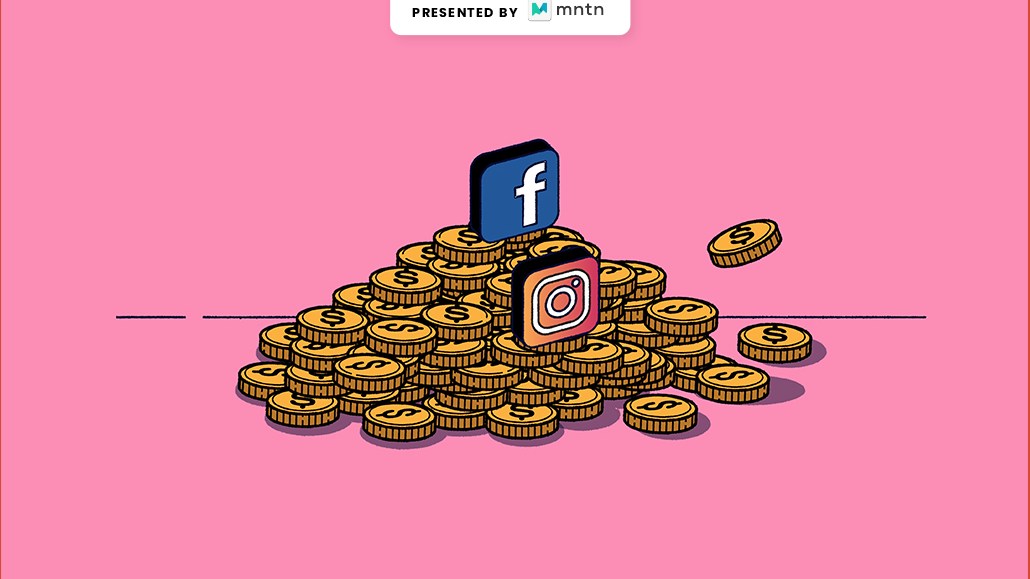Save 50% on a 3-month Digiday+ membership. Ends Dec 5.
‘It’s where our key customers are’: Why a DTC shoe brand spends big on Instagram and Facebook

With Apple’s data privacy crackdown and an oversaturated social media advertising marketplace, 2020 was thought to be the year that killed the Instagram brand. But at least one direct-to-consumer startup doesn’t see it that way.
Fulton, a New York City-based DTC brand, currently dedicates 60% of its total ad spend toward Facebook and Instagram. Co-founder Libie Motchan cites the platforms’ retargeting, conversion, performance measurements and optimization capabilities as the reason that Instagram is an integral part of the brand’s media mix.
Even as Apple continues to introduce data privacy measures that hinder targeting and attribution capabilities for social media advertising, the sustainable footwear brand hasn’t lowered its budget dedicated to Instagram. (Fulton declined a request for details around its ad budget). As a brand selling arch support, Fulton launched just a few short months ago, offering a more modern spin on a traditional and medically technical space. That being said, they’re targeting millennials, many of which are on Instagram, making Fulton bullish on the platform even as a number of DTC brands are de-prioritizing it. So far, about 65% of the brand’s sales are attributed to Facebook and Instagram, per a spokesperson for the brand.
“Instagram has been really effective because it’s where our key customers are,” Motchan said. “It’s definitely becoming more challenging over time with iOS 14, but retargeting is the most critical thing.”
Per Motchan, social media users don’t typically purchase during the first interaction with a brand. Retargeting works by getting brand ads in front of shoppers after they’ve left the site, reintroducing the potential customer to the brand and encouraging them to purchase, making retargeting increasingly important for Fulton as the new brand builds up its audience, Motchan said.
It’s a strategy that makes sense, marketers say. Per Elijah Schneider, CEO and founder of social marketing agency Modifly, nearly half of the client ad budget goes to Facebook and Instagram specifically because of the platforms’ ability to convert online shoppers into customers. Modifly has worked with Mercedes, Nordstrom and the Celsius drink brand.
Per Facebook analytics, Fulton started running paid ads on Facebook and Instagram back in March, after a soft launch with organic posts to gauge customer interest. Since then, the brand has layered in influencer marketing in a play to present the millennial, modern brand as conversational and relatable, according to Motchan.
Ad position: web_incontent_pos1
“We see it as a tool to help us destigmatize the category,” Motchan said. “[Shoe insoles] could not be a less cool product or category, but it was very critical for us to develop a curated Instagram.”
At least half of Instagram users are reportedly more interested in a brand after seeing an Instagram ad, according to recently published research from social media management platform Hootsuite. For a newly launched DTC brand, marketers say a rich media mix is key, but it makes sense for social media platforms to be at the helm.
“The algorithms have made it increasingly more difficult for new brands to break through the clutter and that’s what paid dollars allow for: To amplify your message to the right audience,” said Ashley Karim-Kincey, vice president of media at Dagger, a full-service creative agency.
Motchan admits Apple’s crackdown on data privacy has complicated the social media advertising retargeting process. But instead of decreasing ad spend on Instagram, the DTC company has dedicated 20% of total ad budget to experiment with incremental channels, such as out-of-home, TikTok, newsletters, and more recently, advertising on the social question-and-answer website Quora.
“No matter how effective Facebook and Instagram are, when you think about the customer journey, it’s incredibly important to hit them in different ways from different angles,” she said.
More in Marketing

Ulta, Best Buy and Adidas dominate AI holiday shopping mentions
The brands that are seeing the biggest boost from this shift in consumer behavior are some of the biggest retailers.

U.K. retailer Boots leads brand efforts to invest in ad creative’s data layer
For media dollars to make an impact, brands need ad creative that actually hits. More CMOs are investing in pre- and post-flight measurement.

‘AI is permeating everything we do’: How Guitar Center developed 2 AI tools this year
This summer, the company launched a chatbot called Rig Advisor to help customers find the right instruments and products.
Ad position: web_bfu



